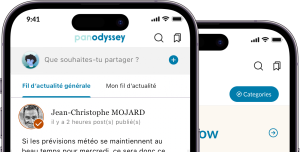
Micromarketing with micro-budget
 6 min
6 min
Micromarketing with micro-budget
I used to have a class where our professor used to work at Google. He kept telling us that “Advertising is not spending aimlessly, it’s investing.” The more you do it, the more you earn from it! (of course, only if you do it right)
But how do you advertise something right? I learned how it can be done in school but marketing and advertising is an ever-changing business landscape. That’s why I decided to take a closer look at the excuses I heard all the time that we don’t have a budget for marketing and advertising. I decided to start a micromarketing experiment, at an extremely low-cost which I’ll discuss in more detail in the upcoming article. I took every penny that I can afford a month (deducted from my food costs) for buying ads for my friend’s start-up in Taiwan.
The goal is to use the least money possible to generate the highest possible results. Plus, since I cover 100% of the advertisement costs, it is also my tuition fee to train myself with Google Ads!
What’s micromarketing?
From the Alexa blog, micromarketing is when you target a small group of interest and make an offer that solely serves these specific individuals.
It is a great strategy for both large and small companies because it is highly concentrated and that makes it ideal for finding specific market segments to sell or test a product or service. Generally speaking, it’s more cost-effective than mass marketing plans or niche marketing strategies. It’s time-consuming but you can understand your target audiences at a very intimate level and build deeper relationships with them.
 Image by Joseph Mucira from Pixabay
Image by Joseph Mucira from Pixabay
First step: Find who you want to talk to
The first thing in marketing is always to understand the market. Once you define who your customers are, you can try to understand and engage with them. In micromarketing, you need to get even closer, see what they like, what they desire, what they’d like to do with their family and friends… If you have some budget, the best approach is to either conduct surveys or find a focus group and interview them. You even have the chance to reinforce the trust between your brand and your customers this way since you understand what they value and care about.
If you don’t, just like me, there are many other tools you can use for identifying your customer's needs. It is great to use Google Analytics to learn what their behavior is before and during their visit to the company's website. It can also be done by scanning the industry in general and learn from your competitors or industry leaders.
The ultimate goal is to build up buyer personas, a detailed profile of the type of customer you’d like to attract!
Second step: Determine how to reach them and what to say
It’s like two people in a bar, after knowing who you’d like to talk to, now it’s about how to make a move. Only that with micromarketing, you have more options.
To start, it is to decide where to send out the message. For different groups of customers, you need to decide carefully how to reach out to them adequately with the most efficient method possible. Each social media, search ads or display ads on YouTube faces different people with their own channel strength.
Following that initial approach is the pick-up line. How you’ll form the message to include the information you’d like to convey and the attractiveness of that message crucial to the success of a marketing project. This is when your prior research shows its value. With an accurate buyer persona, you can talk in a way that your target audience would listen to. You can even use the key phrases they often employ. It is always more important to evoke their emotions than bombing them with information about brands, products or services. People like you and I always prefer others to share the same feelings and to understand us.
Last step: Just do it!
The key to implementing a marketing campaign is “test, test, and test”. Up until the first two steps, all the things that are planned depending on your analysis and the messages you think people would like. It’s time to put the project out there in the wild and test which message is your true winning formula that talks straight to people’s hearts.
What works today may not be as efficient tomorrow. Constantly test different messages and closely monitor how the market reacts. Never stop tweaking a marketing campaign and always aim for higher performance!
---
This is my first note on my freelance marketing project that I started 2 months ago. What I learned at school is the basics and the tools I use for the freelance project, I get to practice how to use the knowledge I have and reach different goals. (Interested in what they are? Check out this article) The second part of the project is ongoing and I’ll be sure to keep updating my notes on marketing with a small budget!









 English
English
 Français
Français
 Deutsch
Deutsch
 Italiano
Italiano
 Español
Español



 Contribuer
Contribuer








 Tu peux soutenir les auteurs qui te tiennent à coeur
Tu peux soutenir les auteurs qui te tiennent à coeur





